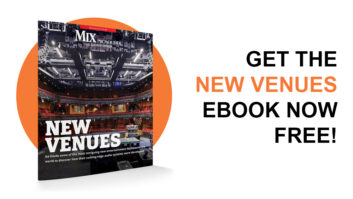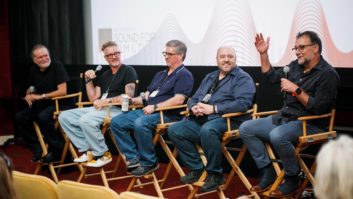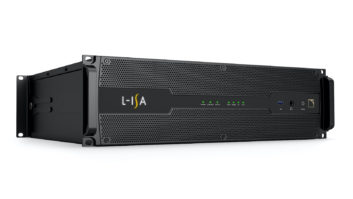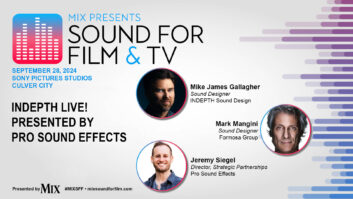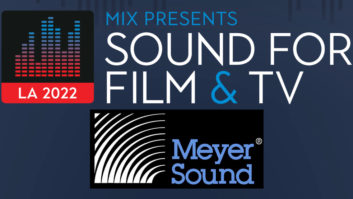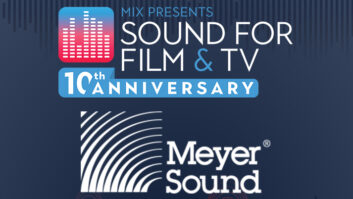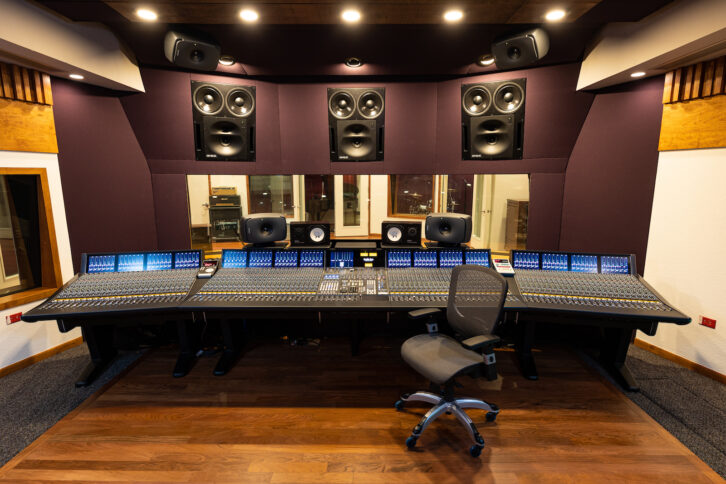
Mansion Sound was recently added to the pantheon of world-class studios with the unveiling of a recording and mixing complex featuring the only 96-input Solid State Logic Duality Fuse SuperAnalogue console currently in existence, paired with the most powerful Genelec immersive music system in the United States to date.
The Mansion Sound facility, offering three control rooms linked to a central tracking space with three iso rooms, shares a building with the Mansion Theater for the Performing Arts in the town of Branson, an entertainment destination in the Ozark Mountains of southwest Missouri. All three rooms, two of which are outfitted for Dolby Atmos mixing, are linked to the 3,000-seat theater, enabling the recording of orchestral projects, live performances and other events.
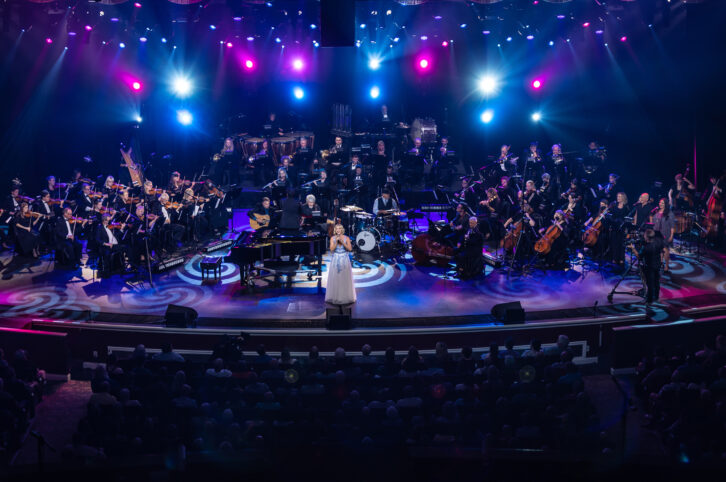
In decades past, Branson, with its many marquee live performance venues, was a magnet for country music fans. These days, visitors may just as likely be in town visiting the Titanic Museum, Dolly Parton and Paula Deen’s signature eateries, or going golfing or fishing. The 30-year- old Mansion Theater still hosts country music legends like the Oak Ridge Boys and the Gatlin Brothers, but its concert schedule has diversified to also include Broadway productions such as Disney Princess: The Concert.
That’s where Mansion Sound comes in. Mansion Entertainment Group, established by Gene Bicknell, a patron of the performing arts who was once the owner of the world’s largest Pizza Hut franchise, and a gospel recording artist well into his golden years, also includes Mansion Animation and Mansion Film & Television. Mansion Sound has been designed to support those divisions, as well as a planned expansion of the group’s family entertainment footprint.
The first big project to come out of the new facility was An Ozark Mountain Symphony: A Musical Celebration, an hour-long special featuring The Springfield Symphony Orchestra and an all-star cast of Disney, Broadway, gospel and country music stars. The show was filmed on the stage of the Mansion Theater over two nights in June and was recorded and mixed by multiple Grammy- and Latin Grammy-winning producer and engineer David Reitzas on the Duality Fuse in the A room. It premiered on PBS in October.
RETOOLING THE ROOMS
Mansion Sound’s new facilities are built on the foundation of a recording studio that chief engineer Danny Stone designed and constructed in 2006. “I did everything but commission the SSL 9000J,” he says of the 104-input desk, previously installed at Enterprise Studios in Burbank, Calif. Back then, Stone oversaw the architectural and acoustic design, electrical and technical infrastructure, and selected all the gear. At his suggestion, Mansion later also built a broadcast truck housing an SSL C100 digital console that worked for all the major TV networks.
Stone subsequently relocated to Arizona but was persuaded to return at the start of the coronavirus pandemic to refurbish the studio and its aging SSL 4000E console, which had come from Manhattan’s Skyline Studios. Midway through that project, he was given a substantial budget and given free rein to design and build the new Mansion Sound facilities.
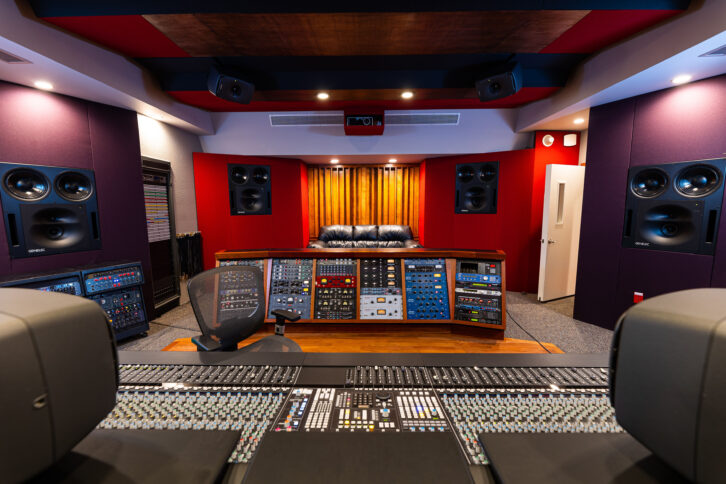
The flagship A room features the 96-input Duality Fuse, a version of SSL’s desk that features an integrated Fusion analog multiprocessor, plus other new features. “This latest version of Duality does things no other console can do,” Stone says.
The console is complemented by a Genelec Dolby Atmos monitor system. “I am just a big Genelec guy,” he says, “and I have been since the 1031 came out.” For the LCR positions, along with the side and rear surrounds, he chose Genelec’s three-way 1234A Smart Active Monitors, one of the manufacturer’s largest models. All seven monitors are soffit-mounted. Four 8351B monitors deliver the overhead zones, and there are two 7380A subwoofers for bass management and LFE.
An outboard rack and a six-bay credenza hold a good selection of the usual suspects of mic preamps and processing gear, vintage and modern. The racks also house a couple of compressors from Intec Audio, Stone’s own Branson-based boutique manufacturing operation.
Stone continues, “For the B room, we wanted a console and controller that could provide everything we were used to, like SSL EQs and compressors, but with the added flexibility of a high channel count, multi-format busing and tight DAW integration.” In addition to an SSL System T S500 48-fader digital desk, the room is equipped with a Genelec 7.1.4 speaker setup of “The Ones” Smart Active Monitor models: seven 8351B monitors for LCR, sides and surrounds, four overhead 8341A monitors and a pair of 7380A subs.
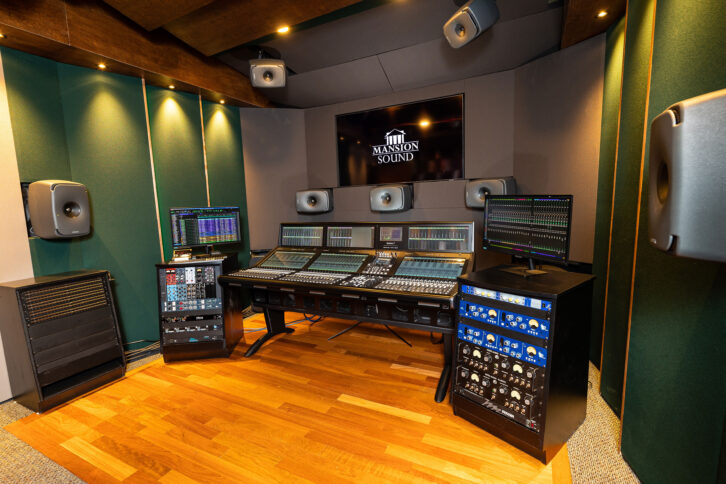
Stone and the facility’s Pro Tools and mix engineer, Josh West, installed and calibrated each room’s monitors, which were sourced through Danny Watson at Ozark Pro Audio Video, using Genelec’s GLM software.
Outboard gear in the B room includes 500 Series racks with modules from Little Labs, Maag, Pope Audio, Pultec, Rupert Neve Designs, Shadow Hills and others, including an SSL UltraViolet EQ. Two more Intec Audio compressors sit alongside rack units from API, Millennia and Neve.
The C room is still under construction. “We hope to have it finished by the end of this year,” Stone reports. The API 2448 console for that room has already been delivered.
“All three rooms have a Bricasti remote,” he also notes. “The six Bricasti reverbs can be routed to any room in any combination.”
ALL ABOUT CONNECTIONS
All three control rooms can access the 25- by 16-foot tracking space, although only the A room can view the area through glass. Video feeds from the space can be fed to the monitors on the front walls of the B and C rooms, which both support film mixing, Stone notes. There are scads of microphones from AEA, AKG and Audix, through Manley, Neumann and Royer, to Schoeps, Sennheiser and Telefunken available for tracking.
There is also plenty of computer horsepower available in the A and B rooms, which each feature 24-core Apple Macintoshes, each with 760 GB of RAM. “There are two video cards in each Mac, and each has another 32- gig of RAM for each card. We wanted to see what it would take to crash it, so we loaded 2,040 tracks on Pro Tools, we put 10,000 time-based plug-ins on it and ran a 4K video. When Pro Tools crashed, the Mac was only at 1 percent,” Stone marvels.
A pair of 100TB Avid servers are connected to the rooms via a 10Gb switch. “We record straight to the server. We don’t even use the hard drive in the computer, and there’s no latency,” he says.
For the Ozark Mountain Symphony project, Stone recalls, “We used 108 mic lines from the stage to the studio.” One of his first jobs upon returning to Mansion was to refurbish the tielines between the two locations. The stage lines now split three ways through Jensen transformers to Mansion Sound and to the 96-input DiGiCo SD12 desks at the theater’s FOH and monitor positions. The Mansion Theater features an L-Acoustics Kudo line array rig, he adds, 12 or 14 boxes deep per side, plus subs.
“You can have all 128 lines in the A room, 96 lines into the B room and 48 lines into the C room,” Stone says of the interconnects. “They can be switched between rooms at the push of a button, all lines at once or in any bank of eight.” The A and B rooms are also networked over Dante.
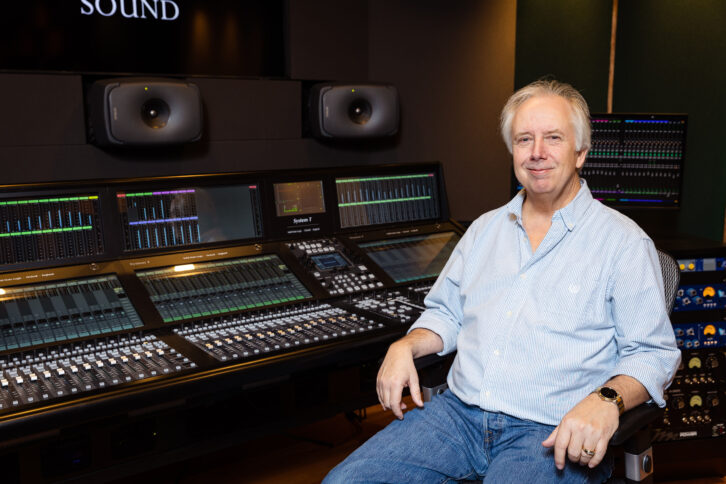
“Danny has built an engineer’s paradise here,” enthuses Joe Carrell, Mansion Sound’s executive mixer, producer and engineer. Carrell pulled in from Nashville with a 20-plus-year resumé that includes working on 11 Grammy-nominated records and dozens of chart-topping hits across multiple categories.
He also has ample experience with orchestral projects, which dovetails with the content expected to emerge from Mansion’s other divisions. As Mansion Entertainment Group CEO Larry Wilhite has commented, “We’re going to use everything to the best of our abilities and hopefully bring a lot of joy and happiness to a lot of people, whether through animation, live performances or life in general.”
Carrell had recently finished recording and mixing Disney Princess: The Concert in Nashville when he was hired. “I think that sealed the deal,” he chuckles.
One of Carrell’s first projects at the studio was the Atmos mix for a Mansion animated short, which he did in the A room, albeit in-the-box. He has also brought some of his own ITB projects to the room, including by jazz artists Jane Monheit and Linda Lavin, which he mixed on the Duality Fuse. “They were fun to do. There’s not many of us who get to work on an analog desk very often anymore.”
He’s hoping to welcome clients from far and wide to share that analog mixing experience. “And you can bring your family,” he says; Mansion’s concierge service will help arrange accommodation and entertainment, such as trips to local museums, theme parks or golf courses.
You can expect the B room’s schedule to fill up soon, too, he says: “We’re actively in talks with some label partners to be in the Atmos reissue pipeline.”

